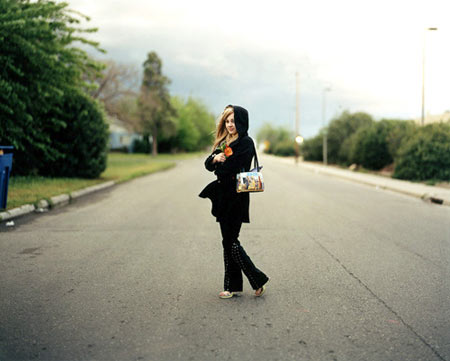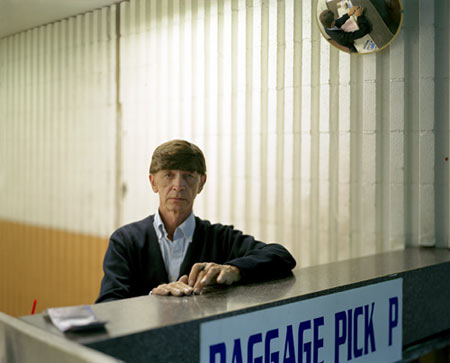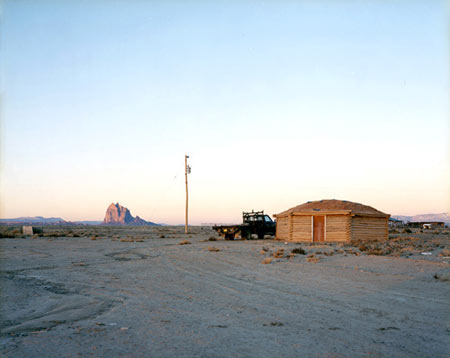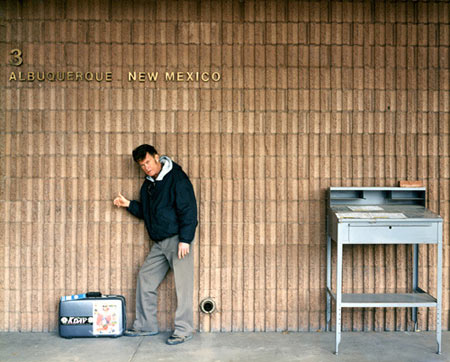A Conversation With Richard Renaldi

Richard Renaldi’s Figure and Ground is one of my favourite photo books from this year. I immediately hoped to be able to talk to Richard about his work, and I was very excited when he agreed to do so.

Jörg Colberg: When you look at how photography has evolved over the past decades how do you see your work in that tradition? Are you conscious about following up or commenting on earlier work? And what photographers do you consider as role models or as people whose work has shaped or influenced yours?
Richard Renaldi:I see my work in some respects as moving both alongside and against how photography has evolved over the past two decades. I think that my work moves against the trend of the past few years of irony in art and photography. I am attempting to show dignity in human beings and the realness of people of all differing classes, ages and races in my photographs. I feel that my work is moving alongside other photographers of recent in much the sense that Roger Hargreaves describes in my essay about the continuum of photography and passing the torch. In this way I feel that I am a portraitist in the tradition of photographers like August Sander, Walker Evans, Judith Joy Ross, and Joel Sternfeld… As far as commenting on following up on earlier work if you mean my own work - yes I feel inspired by work I have done in the past and often that work is a springboard for where I am now and what I am doing now. If you mean other people’s work - there is obviously connections that could be made between their work and mine and I have learned much about the history of photography but I think that my work isn’t derived from a need or desire to comment on earlier work. However, earlier work does inspire me - for instance I was inspired to do the Workers series after looking at August Sander’s work People of the 20th Century.

JC: When you say that you’re moving a bit against the trend of irony and that you’re trying to show dignity in human beings what work are you thinking of where that hasn’t been the case?
RR: If you look at some of the work that has been shown in the Chelsea galleries since the mid 90’s I would say there has been a pretty strong thread of frivolousness and irony there. As far as showing “dignity in human beings” - not everyone working in portraiture is shooting strangers and dealing with those ideas/issues. Of those that are I don’t know if I want to go on record as criticizing other photographers publicly… I have some work in mind but would rather not discuss that in this forum…

JC: For his work “In the American West”, Richard Avedon drew a lot of flak. He got accused of not showing the real West - whatever that might be. It’s probably almost inevitable for a photographer to run into this kind problem. How have people reacted to your photos from the West? And how do you (or, if you - hopefully - haven’t run into problems similar to Richard Avedon’s, would you) approach criticism of that kind?
RR: The West is something that I wanted to do a version of through my eyes. Richard Avedon does not own the West and tough I think it is strong and important work - I also felt that the spectacular natural environment of the West was missing for me in that work. Living in LA for a couple years gave me easy access to this most dramatic part of the United States and I wanted to make photographs - both portrait and landscape. To answer your question I haven’t received any criticism for the work as of yet but I have sensed a reluctance and hesitation from some quarters regarding being too closely associated with Avedon’s work. I’m not afraid to be compared but I think it is really different work than his and that other comparisons could just as well be made. I recently divided the work into two bodies one on The West and the other on the Great Plains. I felt that there was too much work there and that there really is some confusion as to where the West begins and what associations people have with the west romantically and all. The Great Plains have their own set of impressions and notions and I felt it was a region worth highlighting. I love the flatness and openness of the land in the Plains. My forthcoming show at Yossi Milo gallery will be a selection from three of my series titled The Plains. They are generally all landscapes and portraits from areas of the Great Plains or plains from areas out West.
JC: Would you mind talking about this series a little bit? What drew you to this work? Typically, when people hear that I’m from Europe, they tell me that there really isn’t much to see, and it’s almost like people want you to either look at the East or the West Coast with their respective attractions. What are the attractions of the Great Plains, and how have you tried to bring those out in your work?
RR: I had been drawn to the Plains as I said previously as an outgrowth of the West. What drew me there and what interests me is the de-populating of this vast region of the US. There are many “dying” towns from Texas to Montana. The economic realities of 21st century America no longer support the early 20th century economic models these places were based on. I find these towns both beautiful and sad. There is not much to do for the youth in these places and the ones that remain are mysterious to me. Many people say there is “nothing there” in places like Kansas and Nebraska and this is something I want to disprove… What I have found is an abundance of beautiful and stark landscapes and abundant preserved small American towns. I have found a rich architecture of both brick and limestone classic early 20th century American architectural vernacular and metal and glass modernism. Regarding landscape I find the Great Plains very inspiring… I see grain elevators and silos dotting the land and train tracks traversing the flat earth for miles. I find clusters of trees or lone houses or vice-versa and their relationship to the wide open sky and land visually striking. By photographing these places and scenes I think I am bringing out the “attractions” of the plains…

JC: It seems to me that unlike “the West”, this almost mythical place, “the East” doesn’t really exist. When I looked at the photos and especially portraits that you took in places like Newark, I thought that there really should be something like a notion “the East”. But there isn’t. So what made you take photos in places like Newark?
RR: I was intrigued by Newark. Living in NYC and having been exposed to these negative impressions of Newark - I thought it would be an interesting place to explore through my preferred medium… I also felt a greater sense of openness there than in NYC and this is when I turned my frame sideways and started to include the urban landscape in these portraits. Again I was hoping to uplift Newark by creating strong and moving images from this beautiful city that lives in the shadow of NY and is often associated with crime or blight (which is not what I found there). I actually started the Fresno project not too long after Newark and I do see some strong connections there - a sort of East/West connection between these two cities that people have generally pessimistic views of. The work was shown together at Debs and Co. a gallery in NYC.

JC: One topic which just won’t stop fascinating me (regardless of how many photographers I ask about it) is the relationship between a photographer and his or her subjects. How do you approach portraiture? And how do you then take those portraits? Also, and this is something that I always find especially interesting, when your subjects see the portraits, how did they react?
RR: I approach portraiture as a stranger approaching another with both hope and fear. There is an element of possible rejection there as well as suspicion which I try to eliminate and build a sense of trust and understanding as to what I am doing and why I am doing it. I ask my subjects if they would allow me to please make their portrait and then we set up the shot and I may or may not do some directing as to what they are to do, hold, and where to look. I also do the “casting” right there on the street. We may find the right spot nearby or walk/drive together until the right background is found. I almost never know the reaction of my subjects to the photographs - as I mail them to them and very rarely receive a response/thank you. My guess is though that some of these strangers are probably not extremely happy with their photograph because people are very self critical and I bet many of them (but not most) would prefer to remember themselves smiling which I prefer my subjects not to do. Other people probably really enjoy them and have given them to family members or loved ones (as I always send more than one copy…)

JC: So you haven’t heard of any of your subjects walking into a show where their portrait is shown? Do you miss feedback by your subjects, or is it not relevant for you?
RR: At my last show in LA - two of the subjects actually came to the opening. I think it was pretty cool and exciting for them to see themselves up on the gallery wall… The other circumstance when this occurred is at the opening at the ICP First Triennial one of my subjects in the Madison Avenue series Gay Talese was there and we took a photo together (while I borrowed his signature fedora hat) in front of my photo of him.
I certainly am glad when I hear that a subject is happy with their photograph. As I want them to feel good about how they appear to the camera. I do try to be a realist about this though and don’t expect everyone to like them… I do like the feedback from the subjects but the opportunity for it doesn’t arise too often with my artwork (more often with my commercial work…) That said I just saw the workers I photographed for my project on The FARM at the Green Market last week and they all said “Thanks for the photographs and that they liked them.”
 By
By